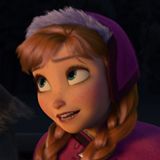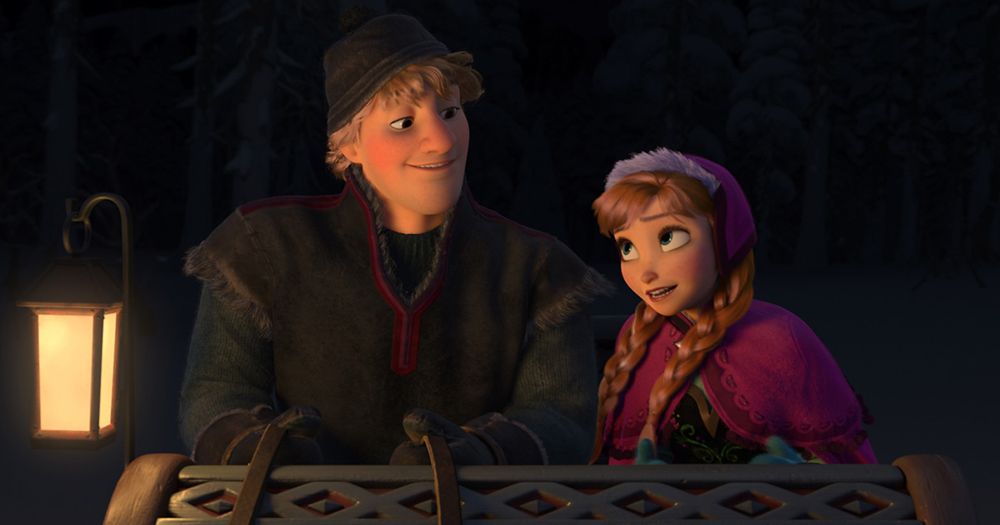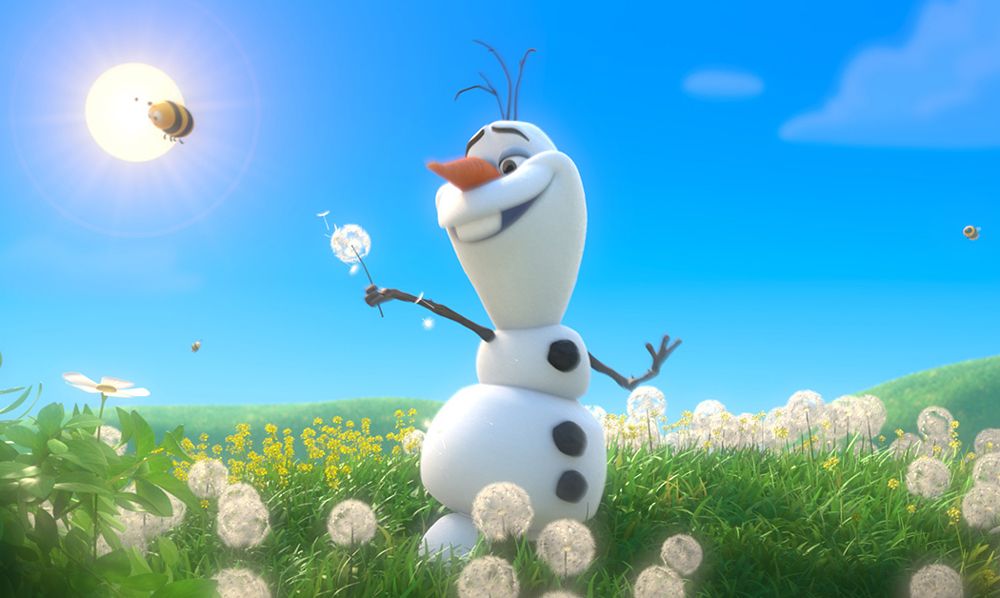For better or for worse, fairy tales are a repository for classical values – notions of good and bad, courtship and romance, gender roles, etc. _Produced by Disney, whose biggest successes turned fairy tales into animated boilerplate, Frozen is an overdue rejoinder to those values, as well as to the prevailing wisdom about how best to explore them. An adaptation of Hans Christian Andersen’s “The Snow Queen” writ large as an object lesson in tolerance, Frozen is a brisk, engaging and resonant film that deconstructs and challenges not just conventional choices, but conventions themselves.
Kristen Bell (Forgetting Sarah Marshall) plays Anna, the youngest daughter of the King of Arendelle. After a childhood spent in isolation, even from her sister Elsa (Idina Menzel), Anna is eager to explore the outside world. But when she meets a handsome prince named Hans (Santino Fontana) during Elsa’s coronation and announces immediate plans to marry, her sister flies into a rage, inadvertently revealing the magical power to manipulate snow and ice.
Fleeing Arendelle and leaving a frozen kingdom in her wake, Elsa finds refuge in the mountains, where she can live alone, unafraid of harming anyone else. Anna soon follows, enlisting a mountain man named Kristoff (Jonathan Groff) and a mystical snowman named Olaf (Josh Gad) to track her down in the hopes of helping Elsa. But after the devilish Duke of Weselton (Alan Tudyk) declares Elsa a public menace and pits her subjects against her, it becomes up to Anna to rescue her sister and restore the kingdom.
Disney made key changes to Andersen’s fairy tale to make it more accessible, but it’s still a little odd: A young girl discovers she has supernatural powers that accidentally hurt her sister, leading her parents to hide them from the world and keep both girls locked away in the cavernous halls of the palace. But the film’s opening sequence works in a broader but almost as effective way as the wordless opening of Up, in that it depicts years of a relationship in just a few minutes, and so deeply defines the dynamic between family members that virtually every moment of interaction after that becomes suffused with meaning, and feeling. Anna and Elsa love one another deeply, but Elsa fears hurting Anna (or anyone else, for that matter), and that core desperation, manifested in opposite ways, provides their relationship with genuinely powerful drama.
However, the way directors Chris Buck and Jennifer Lee tell this story not only razes the narrative conventions of classic fairy tales, but also challenges the way they’re brought to life on screen.
For example, utilizing Broadway actors rather than brand-name movie stars for many of the film’s biggest roles, they focus on bringing in the right people, rather than the most marketable ones. But in general, the movie takes familiar scenarios and then plays them out in exceptionally smart, progressive ways, starting (and ending, actually) with Anna’s romance with Hans.
Seemingly two minutes after escaping the halls of the palace, Anna meets Hans, and the two discover they’re “perfect” for each other – the epitome of storybook romance. But they are soon parted when Anna goes after Elsa, and she’s paired with Kristoff, who melds with her like oil and water, but their anarchic chemistry proves much more compelling than the on-paper perfection of her relationship with Hans. What’s more amazing, however, is that the movie never tries to suggest that romance is better than the other, even if it offers a smart misdirect while testing the theory that a “true love’s kiss” is the only salvation when Anna is injured. Moreover, Buck and Lee astutely prioritize Elsa and Anna’s relationship as the most important one in the film, and ultimately manage to make them responsible for one another’s safety and happiness.
Meanwhile, the movie is beautifully animated, and utilizes the components of animated filmmaking – anthropomorphized animals, magical creatures – in ways that are familiar but still feel fresh. Kristoff’s reindeer pal is adorable and a remarkably expressive companion for the would-be loner, but it’s Josh Gad’s Olaf, an enchanted snowman with the intelligence, of, well, snow, that steals the show when those emotional payoffs ebb briefly for a bit of fun. His song about what it “must” be like to experience the warmth of summer is not just hilarious, but one of the best Disney songs in years. But then again, the same can be said for most of the music, which resuscitates the singsong backdrop of classics like The Little Mermaid and Beauty and the Beast – most amazingly, with the catchiness and the emotional heft that the songs in those films had as well.
There are a handful of other surprises and inversions of fairy-tale formula that I won’t spoil (and are probably even more exciting than the ones I mention above), but suffice it to say that Disney has made its best animated film in years, and one that stands to hold up among its venerated classics, even if it’s too soon to declare it one. But for a film that not only champions differences, it exemplifies the virtue of being different, in that it arrives at a completely satisfying finale without bothering to take the same journey as all of the films that preceded it. Ultimately, Frozen is a magnificent film, a gorgeously animated, well-told and beautifully evocative adaptation of Anderson’s tale – but the only fairy tale ending that comes out of it is how well all of its unconventional parts come together.
Frozen opens Nov. 27 nationwide.



